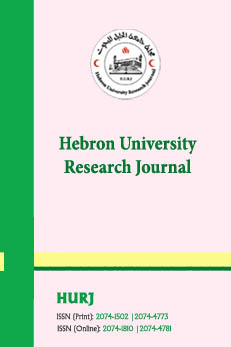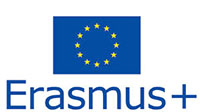Medical Biophysics Department
Course Description
View Course description as PDF file:
Specialization Compulsory Requirements
41102 Calculus (2)
Solids of revolutions, volumes using cylindrical shells, disks and washers, arc length and surface area of revolution, the transcendental functions, the general exponential and logarithmic functions, the L-Hopital rule, the hyperbolic functions, the inverse function of the trigonometric and hyperbolic function, techniques of integration, integration by parts, trigonometric substitutions, partial fractions, quadratic expressions, improper integrals, sequences and infinite series, convergence and divergence, positive term series, alternating series, absolute and conditional convergence, power series, and Taylor and Maclaurin series
42109 General physics lab
Experiments including topics discussed in general physics course including vectors (forces), rectilinear motion, free falling, SHM simple pendulum and spring (Hooke’s law), friction, Archimedes principle, viscosity, resistances and ohms law, Joules heating, variation of resistance with temperature, magnetic field of earth, resistivity and Wheatstone bridge
42251 Modern Physics
This course aims to introduce the Special relativity, Galileo transformations, Lorentz-Einstein transformations, length and time relativity, relative velocities, mass, energy and momentum relativity, quantum theory of light and black body radiation, photoelectric effect, Compton effect, the uncertainty principle of Heisenberg, Rutherford scattering theory, Bohr's theory of atomic spectra, energy levels and spectral lines for hydrogen atom, quantum numbers of atoms, the wave nature of particles, the de Broglie’s wavelength, X-ray diffraction and Bragg's law, wave equation, Schrodinger's equation, the eigenvalues and expected values, applications to one – dimensional quantum system
44102 General Biology (2)
This course focuses on studying the diversity of living organisms, cell cycle and cell reproduction, gene expression and cell communication
86350 Radiation physics
The interaction of radiation with matter, sources of environmental radioactive pollution (natural and artificial), radiation chains, nuclear reactions, the control of radiation pollution, radiation measuring devices, internal and external exposure to radiation, International Atomic Energy Agency recommendations, radioactive waste treatment and disposal methods, the management of radioactive waste
82443 Pharmaceutical Radioisotopes
This course provides an in-depth study of radioactive isotopes in important pharmaceutical compounds, offering an introductory understanding of their fields of application. The course covers the phenomenon of radioactivity in certain pharmacologically active compounds and discusses the use of radioisotopes in medicine and pharmacy. It also addresses the methods of storing and handling radioactive materials, as well as the safety precautions required when working with radioactive substances. Furthermore, the course explores the use of radioactive materials in pharmaceutical preparations and nuclear medicine
86106 Biomedical Physics
biological and medical systems. It focuses on the applications of physics in understanding biological processes and enhancing medical diagnostics. Topics include biomechanics, equilibrium and rotational motion and their relationship to muscles, stress and strain and their relation to bones, electrical properties of cells and tissues, and magnetic effects in the body. The course offers students the opportunity to understand the scientific foundations behind how the body responds to various forces
86231 Medical electronics
This course covers the analysis of electrical circuits with a direct current power source, an introduction to alternating current (AC) voltage and current, capacitors, inductors, resonance circuits (resistor-inductor-capacitor, RLC), diodes and their applications, transistors and their applications, and operational amplifiers
86232 medical electronics lab
Medical Electronics Lab is an introductory laboratory course for building circuits covering the basic principles and tools required to design typical Electrical and Electronics Circuits Such RLC in AC Circuit, RLC Series Resonance Circuit, Diodes characteristics, Half wave and full wave rectifier, Zener diodes as Voltage regulators, BJT Transistors Characteristics, Operational Amplifier: Basic Characteristics and Applications, Basic Logic Gate
86333 Electricity and magnetism
Electric forces and electric field, Gauss's law and its applications, electric potential, electrical work and energy, capacitance, resistance and electric current, Ohm's law and Kirchhoff's laws, magnetic field, Biot-Savart law, Ampere's law, Faraday's law, Maxwell's equations, magnetization and magnetic properties of materials, A.C. circuits, inductors, electromagnetic waves
86341 Medical Imaging physics (1)
The Medical Imaging Physics course aims to clarify the physical concepts of medical imaging. This includes an explanation of the fundamental principles of diagnostic radiology, the X-ray imaging system, the X-ray tube, X-ray production, the interaction of X-rays with the patient's body, the formation of medical images, and the factors that determine image quality. Lastly, the course provides an overview of the physics behind computed tomography (CT), magnetic resonance imaging (MRI), and nuclear medicine
86345 Medical Imaging physics Lab (1)
The Medical Imaging Physics Laboratory 1 course addresses practical concepts related to the Medical Imaging Physics 1 course. These aspects are implemented as scientific experiments aimed at demonstrating the physical principles of X-rays, including their production, measurement, and characterization. Other experiments focus on identifying radiation emitted by radioactive materials and measuring the radioactivity of these materials using various radiation detection devices
86252 Health Physics and Radiation Protection
An overview of the atoms and nuclei, the sources of radiation and the phenomenon of radioactivity, radiation quantities and units, methods for measuring radiation doses and assessing external radiation exposure, and the biological foundations of radiation safety. Additionally, it covers the effects of radiation, various shielding systems and techniques, and the monitoring and dosimetry of radiation for both workers and the general public, radiation protection practice/ evaluation, radiation-protection criteria and exposure limits, and the guidelines set by International Radiation Protection Agencies
86261 Mathematical physics
This course is designed to equip students with essential mathematical tools for analyzing and solving complex physical problems. The course covers topics such as calculus, complex numbers, ordinary differential equations, linear algebra, vectors and matrices, Fourier series and special functions. Emphasis is placed on applying these mathematical concepts to various areas of physics, including dynamics, electromagnetism, and quantum mechanics, helping students to deepen their understanding of physical principles and apply them in medical and biological contexts
86281 Geometrics and Physical Optics
This course contains the following topics: Nature of light, Geometrical optics (The laws of reflection and refraction, Fermat's principle, the critical angle and total internal reflection, reflection at a spherical surface, mirrors), optical instrumentation (Prisms, the simple and the compound microscope, telescopes), wave equations, types of waves, electromagnetic waves, superposition of waves, Interference of light (Young’s double slit experiment, Michelson interferometer, interference in thin films- Newton’s rings), Diffraction (Fraunhofer diffraction, Fresnel diffraction), Polarization of, some applications of polarization, Optics of the Eye
86282 Geometrics and Physical Optics Lab
This lab aimed at providing hands-on experience and practical understanding of geometric and physical optics concepts. The lab includes experiments that cover fundamental optics principles such as reflection, refraction, wave interference, diffraction, and light polarization. It also addresses topics related to lenses, mirrors, image formation, lasers, and fiber optics
86254 Biomechanic
Study of mechanical movement: human movement. The main applications of joints and the structures of the various regions of the human body, the mechanics of the musculoskeletal system and the application of Newtonian mechanics. This ensures electromyography, computer imaging, electromyography, Mechanics of tissue and fluid and its applications
86302 Computer and Image Modeling
This course aims to teach students how to use computer programs that handle digital medical images, such as 3D image reconstruction, as well as taking measurements like length, width, volume, and density. Additionally, it covers annotating these images and applying custom filters to make the images smoother. The course also includes methods for transmitting images through various networks, conducting inspections of modern medical devices, quality control, and ensuring the efficiency of these devices using specialized software that students will be trained to operate. The course also focuses on image quality verification and ensuring that the image output meets the standards set by the technician
86303 Computer and Image Modeling lab
Training students to conduct examinations on phantom devices using special programs such as Image J and Radiant image
Training students to analyze the data collected after making special images on a CAT Phantom 600 and using programs such as Excel and others to analyze this data.
Training students on how to write reports to evaluate the efficiency of devices by referring to the requirements of the Ministry of Health and international standards for the quality specifications of the electromagnetic spectrum production related to each medical imaging device.
Training students to analyze the readings of radiation leak examination devices and how to deal with that
86342 X-Ray and CT Devices
The X-ray and Computed Tomography Devices course aims, firstly, to explain medical imaging devices that use X-rays for diagnosis and treatment. This explanation will cover the physical principles of operation, quality assurance, and quality control. Secondly, the course includes an explanation of computed tomography (CT), covering its generations, operating principles, CT image production, and quality assurance and control for CT imaging
86343 Radiotherapy (1)
This course aims to provide a comprehensive understanding of the fundamental principles of radiation physics and modern physics used in radiotherapy. It covers the basic principles of quantities used in measuring ionizing radiation doses, as well as the main types and characteristics of dose measurement devices used in radiotherapy. The course also discusses devices used for monitoring external radiation exposure, in addition to the basic principles of equipment used in external beam radiotherapy. It further includes the fundamental principles of dose calculations in radiotherapy using photon beams
86455 Radiobiology
This course is concerned with explaining the basics and techniques of molecular biology, cancer, radiation carcinogenesis, genetic effects of radiation, DNA Strand Breaks and Chromosomal Aberrations, Molecular Mechanisms of DNA Repair, Molecular Mechanisms of Radiation Damage, Repair at the Cellular Level, Mechanisms of Cell Death, Molecular Signaling – Cytoplasmic-Nuclear, Solid Tumor Systems, Cell and Tissue (Survival Assays, Movements, Survival), Microenvironmental Tumors, Radiosensitizers, Bioreductive Drugs, Radioprotections, Relative Therapy, Time-Dose, Low-Dose Hypersensitivity, Genetic Instability, Total Body Irradiation Therapy, Biology and Local Radiotherapy, Interaction of RT with Chemotherapy, PDT and MDR Agents, Gene Therapy, Clinically Relevant Normal Tissues, Effects of Radiation on Fetal Development, Stem Cell Therapy
86351 Quantum mechanics
This course aims to study the fundamentals and key theories of quantum mechanics, including wave packets and the principle of superposition. The content includes the study of the Schrödinger wave equation, the eigenvalue equation, and Eigen functions, along with some applications in one-dimensional systems. The course also explores the general structure of wave mechanics, operators, eigenvalues, and eigenvectors. Additionally, the Schrödinger equation in three dimensions, angular momentum, and the ideal hydrogen atom model will be covered
86361 Advanced Physics Lab
Conducting several experiments related to advanced physics and its applications, such as:
Faraday's law in electrolysis, the Compton effect, electron duality and its ESR diffraction, Planck's constant, the photoelectric effect, the Franck-Hertz experiment, the Hall effect, the Balmer series (visible light spectrum), and resonance absorption of a passive RF oscillator circuit
86381 Medical Laser Physics and optical instruments
This course covers the fundamentals of laser science and optical fibers, with a focus on medical applications. Students will learn about three-level and four-level laser theory and types of lasers such as solid-state lasers, gas lasers, and others.
The course also discusses the interaction of matter with laser beams, including reflection, dispersion, absorption, and thermal and photodynamic interactions. Students will also explore the applications of lasers in therapy, diagnostics, and cosmetic procedures, such as laser surgery, laser imaging, and the role of lasers in treating conditions like glaucoma
86482 Bio-Medical Spectroscopy
This course aims to introduce the fundamental principles of spectroscopy techniques and their applications in the medical and biological fields. The course begins with microwave spectroscopy, followed by infrared (IR) spectroscopy, absorption spectroscopy, nuclear magnetic resonance (NMR) spectroscopy, Raman spectroscopy, and finally ultraviolet-visible (UV-Vis) spectroscopy. Emphasis is placed on how these techniques are used in disease diagnosis, tissue and cell analysis, and the study of biological interactions in the human body. Practical examples from recent research using spectroscopy in medical applications are also discussed
86362 Thermodynamics and Statistical Physics
Basic principles, thermodynamic processes, the ideal gas and gas laws, thermal equilibrium and zeroth law of thermodynamics, kinetic theory of gases, temperature and heat, thermal expansion, modes of heat transfer, latent heat and heat of fusion, first law of thermodynamics, adiabatic processes of ideal gas, thermal machines and second law of thermodynamics, Carnot cycle, heat pumps and internal combustion engines, entropy and second law of thermodynamics, third law of thermodynamics, enthalpy, statistical thermodynamics, introduction to probability theory, Maxwell distribution and its applications, Boltzmann distribution and its applications, Bose-Einstein statistics
86451 Atomic and Biomolecular Physics
This course is focusing on the study of the physical properties of atoms and biophysical molecules and their roles in biological processes. The course covers fundamental concepts in atomic physics, including atomic structure, energy levels, and spectral transitions. It also examines the interactions of atoms and molecules with electromagnetic radiation and related phenomena such as ionization and absorption. In addition, emphasis is placed on biophysical molecules like proteins and nucleic acids, and their physical roles in cellular functions and biological processes. This course enables students to understand the biophysical interactions at the atomic and molecular levels and their applications in biomedical fields
86472 Physics of Nuclear Medicine
The course aims to offer a thorough understanding of the fundamental physics behind nuclear medicine, covering topics such as radioactivity, decay laws, half-life, and decay equilibrium. It will primarily emphasize the techniques involved in preparing radioisotopes for nuclear medicine examinations, their applications, and activity calculations. Additionally, the course will provide an overview of nuclear medicine instrumentation, including Gamma cameras, SPECT, and PET, focusing on their physical principles of operation, factors influencing image quality, the types of examinations conducted with each modality, and the distinctions between these technologies
86490 Field Training (1)
The Field Training Course (1) aims to equip students with the practical and scientific knowledge necessary to meet the demands of the job market. This course includes training in hospitals in two main departments:
- Medical Imaging Department: Under the supervision of a specialist, students will learn how to conduct quality assurance and quality control tests for all medical imaging equipment in the department. They will also learn how to write reports that describe the operational status of the equipment, check the efficiency of shielding in rooms where ionizing radiation is used, and monitor radiation doses for all staff in the medical imaging department, comparing them with permissible doses set by international bodies. The course covers the application of basic radiation protection principles for individuals and equipment to ensure the lowest possible radiation exposure. Lastly, students will learn how to develop regulations and guidelines for all department staff on how to act in cases of radiation deposition within the department.
- Nuclear Medicine Department: Under the supervision of a specialist, students will be trained on how to handle radioactive materials, including receiving and storing them. They will learn how to calculate the radioactive activity of isotopes used in imaging procedures, and receive training in preparing radioactive materials in the correct quantities and concentrations for various imaging tests. Students will also be trained in conducting quality assurance and quality control tests for imaging devices in the nuclear medicine department and will be able to write reports that describe the operational status of the equipment. Training will also cover the general calibration rules for these devices. Students will learn how to perform Area Monitoring and Personal Monitoring using radiation detection devices tailored to each case in order to maintain the lowest possible radiation exposure. Additionally, students will be trained in how to handle radiation leaks within the department and the proper disposal of radioactive waste
86490 Field training (2)
The Field Training Course (2) aims to enable students to apply the theoretical knowledge they have gained in Radiation Therapy Physics (1) and Radiation Therapy Physics (2). This course includes practical training in hospitals within the radiation therapy department. Under the supervision of a specialist, students will be trained in creating comprehensive treatment plans, including all the details. They will learn how to calculate the radiation dose for the patient based on the type, size, characteristics, and shape of the tumor. The course also covers conducting quality assurance and quality control tests for radiation therapy equipment, as well as monitoring radiation doses for all staff in the radiation therapy department.
Additionally, students will be trained on how to handle radiation leaks within the department and will be introduced to the latest techniques for delivering radiation doses to the patient, such as IMRT, VMAT, and 3DCRT. They will also become familiar with the basic principles used in designing radiation therapy departments and zoning areas into Controlled, Supervised, and Uncontrolled areas. The course includes training in internal radiation therapy (Brachytherapy), where students will learn how to select and prepare radioactive materials with appropriate activity and energy levels for the patient's condition (Interstitial, Temporary, Permanent, ULDR, LDR, MDR, HDR, PDR). Finally, students will be trained on how to calibrate radiation therapy equipment
86492 Seminar
The student has to do research in one field of medical physics





